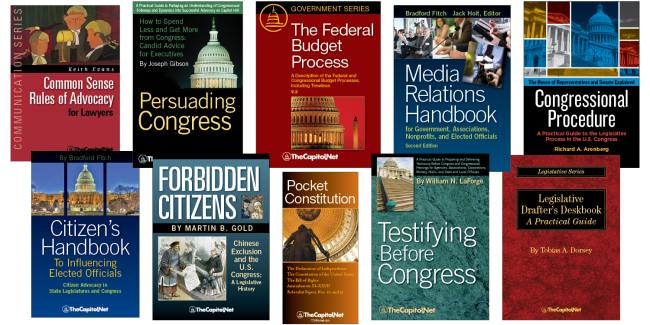From the Congressional Glossary – Including Legislative and Budget Terms
Unemployment Rate / Employment-Population Ratio
Unemployment and the Unemployment Rate
As defined by the Bureau of Labor Statistics (BLS), the number of people who do not have jobs but have actively looked for work in the prior 4 weeks and are currently available for work, expressed as a percentage of the civilian labor force.
Statistical Measures of Unemployment
The rate of unemployment in the United States has exceeded 8 percent since February 2009, making the past three years the longest stretch of high unemployment in this country since the Great Depression. CBO projects that the unemployment rate will remain above 8 percent until 2014. The share of unemployed people who have been looking for work for more than six months–referred to as the long-term unemployed–topped 40 percent in December 2009 and has remained above that level ever since.
“The United States is Experiencing the Longest Stretch of High Unemployment Since the Great Depression,” CBO, February 16, 2012
Unemployment Game Show – Are you Officially Unemployed? | Mint Personal Finance Software
The simple way to think about unemployment numbers is that the joblessness rate can rise or fall for good reasons and bad reasons. If the unemployment rate drops because hundreds of thousands of jobs are being created each month, that’s obviously good news. But if the jobless rate falls because the government estimates that lots of people have become discouraged and dropped out of the labor force, then that’s not good news. In other words, sometimes the unemployment rate, by itself, doesn’t tell the full story. That’s why one of the best statistics to look at is the employment-population ratio, which measures the number of people who have jobs and compares it to the number of people who could have jobs.
“New Unemployment Numbers Are Good News for the White House, but the Silver Cloud Has a Dark Lining,” by Daniel Mitchell, Cato, January 6, 2012
Unemployment
We don’t know for certain how many people are employed because no one counts them. The Bureau of Labor Statistics estimates the number of unemployed based on a random sampling of the population. In itself, this isn’t a problem. Sampling is a well-established method of estimation when it is too time-consuming or expensive to count every single person. The problem arises when a politician pretends that the estimate is an exact measurement.
. . .
Each month, more people join the working age population than retire or die. Consequently, the economy needs to add about 180,000 jobs a month just to keep up with population growth.
. . .
The problem arises when a politician pretends that adding more jobs means there are fewer people out of work. The next time a politician crows about the economy adding thousands of jobs, subtract 180,000 to get the real jobs gained. This week, Business Insider estimated that the economy will add 130,000 jobs in May. Subtracting 180,000 for population growth means we’ll be left with 50,000 more unemployed Americans in May than we had in April.Looking at our current labor market, the official unemployment rate was at a high of 10 percent in October 2009, and has fallen to 8.1 percent. Some politicians say this is evidence that their policies are bringing back jobs. But, much of the decline in the unemployment rate is due to people giving up looking for work. If we were to add back the people who have stopped looking for work since October 2009, the unemployment rate would be more than 11 percent. The official unemployment rate has fallen largely because we’ve stopped counting large numbers of jobless people.
“3 Lies About Jobs and the Unemployment Rate,” by Antony Davies, US News, May 29, 2012
3 Reasons Public Sector Employees are Killing the Economy
There are currently 61.1 million American men in their prime working years, age 25–54. A staggering 1 in 8 such men are not in the labor force at all, meaning they are neither working nor looking for work. This is an all-time high dating back to when records were first kept in 1955. An additional 2.9 million men are in the labor force but not employed (i.e., they are looking for jobs). That means a total of 10.2 million men aged 25-54 – or one out of every 6 men in his prime working years – are not holding jobs in the U.S. economy today. There are 3 million more men in this age group not working today than there were before the recession began.
Record Number Of Men In Prime Working Years Are Not In The Workforce, Senate Budget Committee, May 30, 2014
See also Date Shifting / Fiscal Transparency / Fiscal Illusion (Congressional Glossary).
More
- Employment-Population Ratio – Bureau of Labor Statistics
- Employment-Population Ratio – Federal Reserve Economic Data (FRED)
- Overview of BLS Statistics on Unemployment – Bureau of Labor Statistics
- How the Government Measures Unemployment – BLS
- United States Bureau of Labor Statistics – Wikipedia
- “How Many Americans Are Really Out of Work?” by Tim Cavanaugh, Reason, July 2012
- “Explaining the Unemployment Figures,” by Tim Worstall, Forbes, July 9, 2011
- Labor Force Statistics from the Current Population Survey – Bureau of Labor Statistics
- Unemployment, World Fact Book – CIA
- “The Labor Market during the Great Depression and the Current Recession,” CRS Report R40655 (34-page PDF
 )
) - “Job Growth During the Recovery,” CRS Report R41434 (18-page PDF
 )
) - “Employment Growth and Progress Toward Full Employment,” CRS Insight IN10187 (5-page PDF
 )
) - “Unemployment Insurance: Programs and Benefits,” CRS Report RL33362 (22-page PDF
 )
) - “Long-Term Unemployment and Recessions,” CRS Report R41179 (35-page PDF
 )
) - “The Trend in Long-Term Unemployment and Characteristics of Workers Unemployed for Two Years or More,” CRS Report R41559 (32-page PDF
 )
) - “Unemployment Compensation (Insurance) and Military Service,” CRS Report RS22440 (10-page PDF
 )
) - “The U.S. Trade Deficit: An Overview,” CRS In Focus IF10619 (3-page PDF
 )
) - “Trade Deficits and U.S. Trade Policy,” CRS Report R45243 (29-page PDF
 )
) - “Federal Workforce Statistics Sources: OPM and OMB,” CRS Report R43590 (12-page PDF
 )
) - “Unemployment and Employment Programs Available to Workers Affected by Disasters,” CRS Report R45182 (19-page PDF
 )
) - “Unemployment Insurance: Consequences of Changes in State Unemployment Compensation Laws,” CRS Report R41859 (27-page PDF
 )
) - “The Unemployment Trust Fund (UTF): State Insolvency and Federal Loans to States,” CRS Report RS22954 (16-page PDF
 )
) - “The U.S. Science and Engineering Workforce: Recent, Current, and Projected Employment, Wages, and Unemployment,” CRS Report R43061 (51-page PDF
 )
) - “Unemployment Insurance: Legislative Issues in the 115th Congress,” CRS Report R44836 (13-page PDF
 )
) - “The Federal Minimum Wage: In Brief,” CRS Report R43089 (15-page PDF
 )
) - “The idle army: America’s unworking men,” by Nicholas Eberstadt, September 2, 2016
- “The Ugly Side To Today’s Low Unemployment Rate,” by Josh Bersin, Forbes, July 3, 2018
- “An unemployment rate under 4% is only half the story of the US jobs market,” by Komal Sri-Kumar, Business Insider, May 7, 2018
- The Economic Effects of Financing a Large and Permanent Increase in Government Spending, Congressional Budget Office, CBO Working Paper 57201, March 2021 (42-page PDF
 )
) - “Ramming a $15 Minimum Wage Bill Through the Senate Using Reconciliation Would Be a Norm-Busting Mistake,” by Eric Boehm, Feb. 3, 2021
Courses
- Congressional Operations Briefing – Capitol Hill Workshop
- Drafting Federal Legislation and Amendments
- Writing for Government and Business: Critical Thinking and Writing
- Custom Training
- Congressional Operations Poster, with Federal Budget Process Flowchart
- Federal Budgeting, a Five-Course series on CD
- Congress, the Legislative Process, and the Fundamentals of Lawmaking Series, a Nine-Course series on CD
Publications
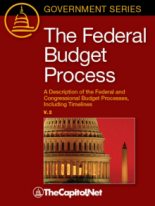
The Federal Budget Process 2E |
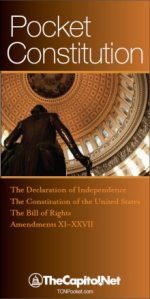
Pocket Constitution |
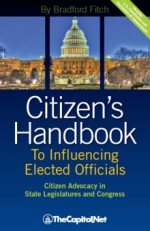
Citizen’s Handbook to Influencing Elected Officials: A Guide for Citizen Lobbyists and Grassroots Advocates |
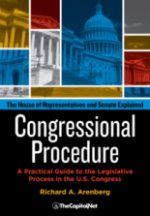
Congressional Procedure |
CongressionalGlossary.com, from TheCapitol.Net
For more than 40 years, TheCapitol.Net and its predecessor, Congressional Quarterly Executive Conferences, have been teaching professionals from government, military, business, and NGOs about the dynamics and operations of the legislative and executive branches and how to work with them.
Our custom on-site and online training, publications, and audio courses include congressional operations, legislative and budget process, communication and advocacy, media and public relations, testifying before Congress, research skills, legislative drafting, critical thinking and writing, and more.
TheCapitol.Net is on the GSA Schedule, MAS, for custom on-site and online training. GSA Contract GS02F0192X
TheCapitol.Net is now owned by the Sunwater Institute.
Teaching how Washington and Congress work ™

